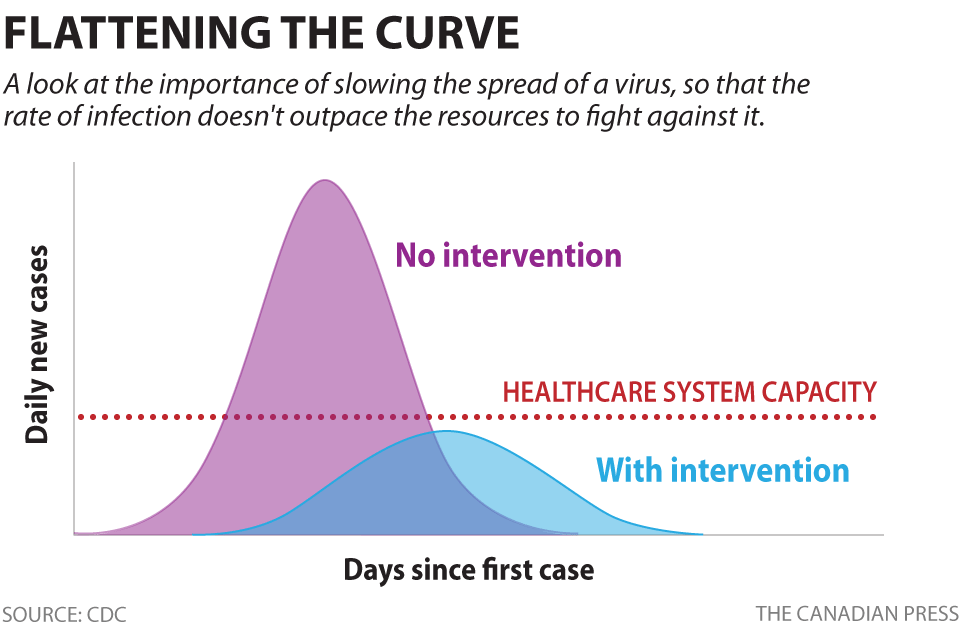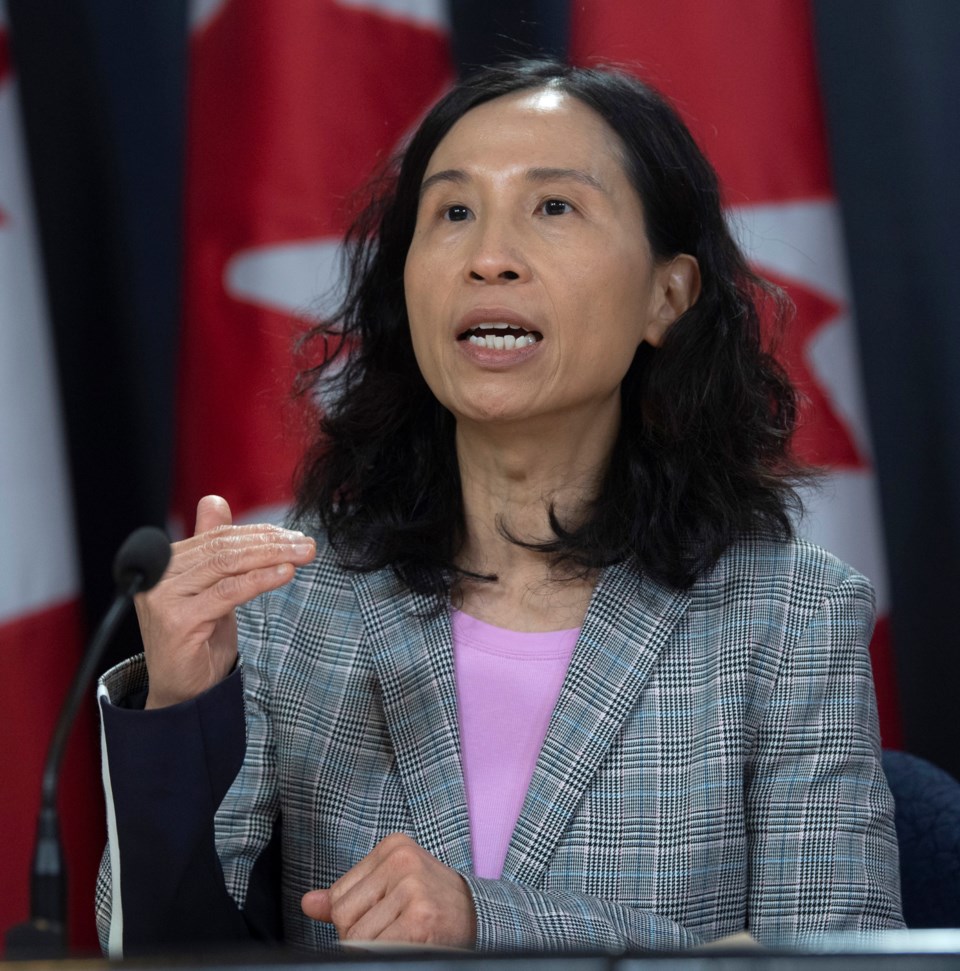Health officials are chanting a common refrain in response to the COVID-19 pandemic: Canada needs to "flatten the curve."
This catchphrase — invoked by both the country's top doctor and health minister — refers to an epidemiological graph showing the daily number of new cases over time.
Experts say the chart illustrates the importance of slowing down the spread of the virus, so the rate of infection doesn't outpace our resources to fight it.
The graph features two bell-shaped curves depicting possible trajectories for the outbreak.
 Caption
Caption
The first shows a dramatic spike in cases overwhelming the limited capacity of the health-care system.
In the other scenario, measures are taken to manage the number of active cases at any given time. This is represented by a gentler curve stretched over a wider timespan.
David Buckeridge, an associate professor at McGill University's school of population and global health, said flattening the curve serves two crucial imperatives — it limits the demand for health-care services, and buys officials more time to respond.
Many Canadian hospitals routinely operate at 100 per cent capacity, Buckeridge said. That means facilities may not have the staff, beds or equipment to accommodate a sudden surge of patients in need of intensive care.
Of particular concern is the limited supply of ventilation machines and respirators to treat COVID-19 patients gasping for air, he said.
Buckeridge warned that the strain could have ripple effects throughout the health-care system.
That's why time is a precious resource as Canada marshals a response to the pandemic, he said.
"Once that curve really escalates, you're kind of playing catch up," he said.
While historical data is limited, Buckeridge said there's evidence to suggest that prolonging an outbreak could lead to an overall reduction in the number of cases, possibly because of seasonal effects on how viruses are transmitted. More time also provides greater opportunity for innovations in research and treatment, he added.
However, Buckeridge cautioned that the timing of interventions is key to not only containing the spread of the novel coronavirus, but minimizing the toll these measures could take on the global economy and social welfare.
"The benefit is pretty clear from a transmission perspective," Buckeridge said. "The cost is a little less clear."
As the number of COVID-19 cases in Canada climbs by the day, Buckeridge said it's hard to project what the country's epidemic curve will look like.
But Dr. Sumon Chakrabarti, an infectious disease specialist at Trillium Health Partners in Mississauga, Ont., said everyone has a role to play in working to flatten it.
At the individual level, Chakrabarti said that means following personal hygiene protocols you're likely already familiar with: wash your hands frequently; avoid touching your face; stay home if you're sick.
These precautions may not sound "too exciting," but collectively they are key to decelerating transmission, Chakrabarti said.
He said health-care authorities are doing their part by testing a broad swath of people, and launching initiatives to screen people at out-patient clinics or in their homes to ease the burden on emergency rooms.
The federal and provincial governments are also injecting resources to build infrastructure and offering social assistance, Chakrabarti said. He said it's going to be a Canada-wide effort to escalate social distancing in the event of widespread community transmission.
Some of these measures to minimize contact are already underway, he added, including the cancellation of mass gatherings such as sports games, concerts and parades; allowing employees to work from home; and people going into self-isolation if they've potentially been exposed to the virus.
Chakrabarti said Canada still needs to prepare for a potential sharp rise in cases. But thanks to all of these efforts, he said there's still time to flatten the curve.
"We're still at a point where we have a chance for our interventions to have a bigger bang for the buck," said Chakrabarti.
"We're all concerned, but panicking is not the answer."
This report by The Canadian Press was first published March 12, 2020.
Adina Bresge, The Canadian Press



